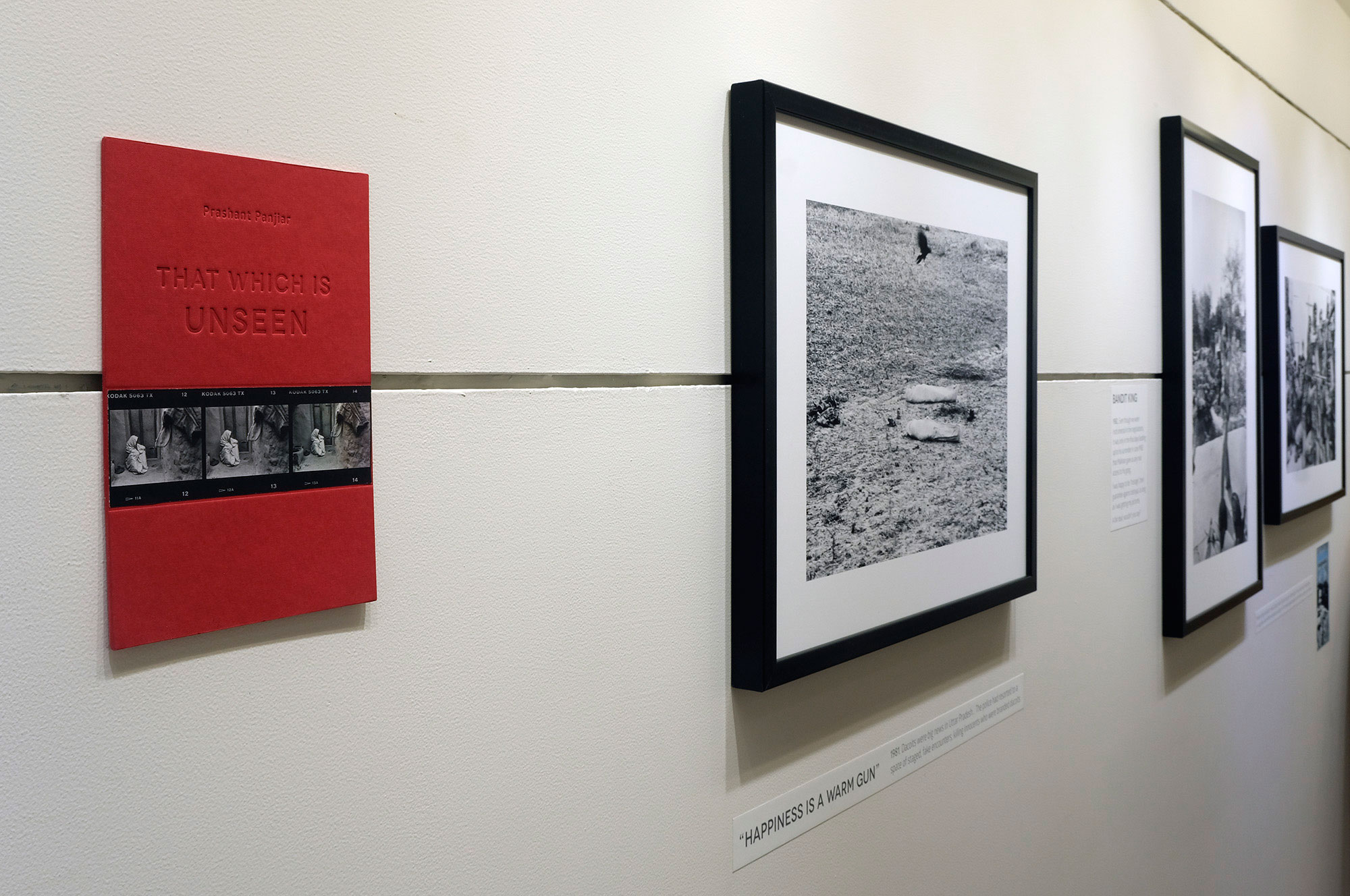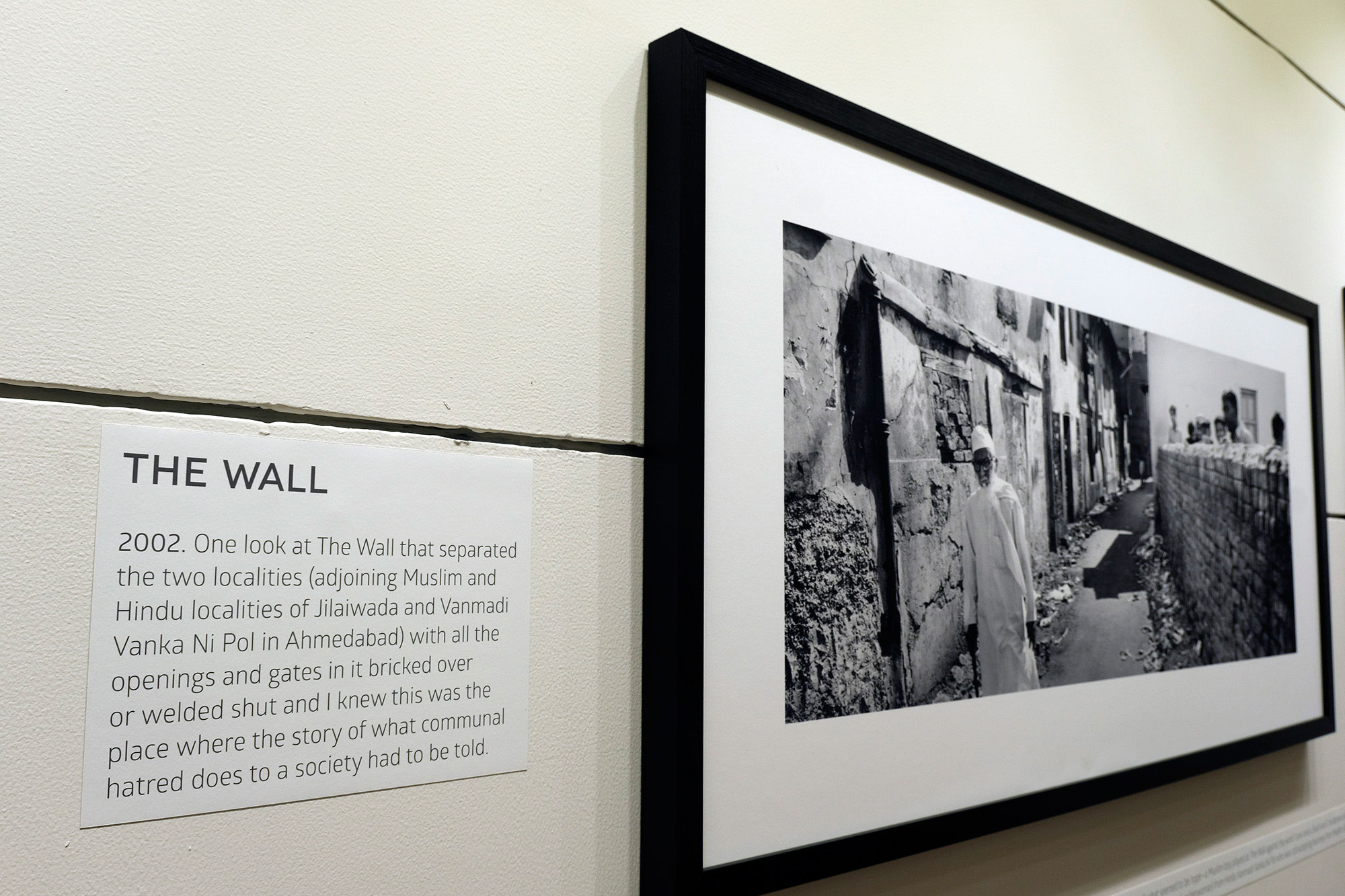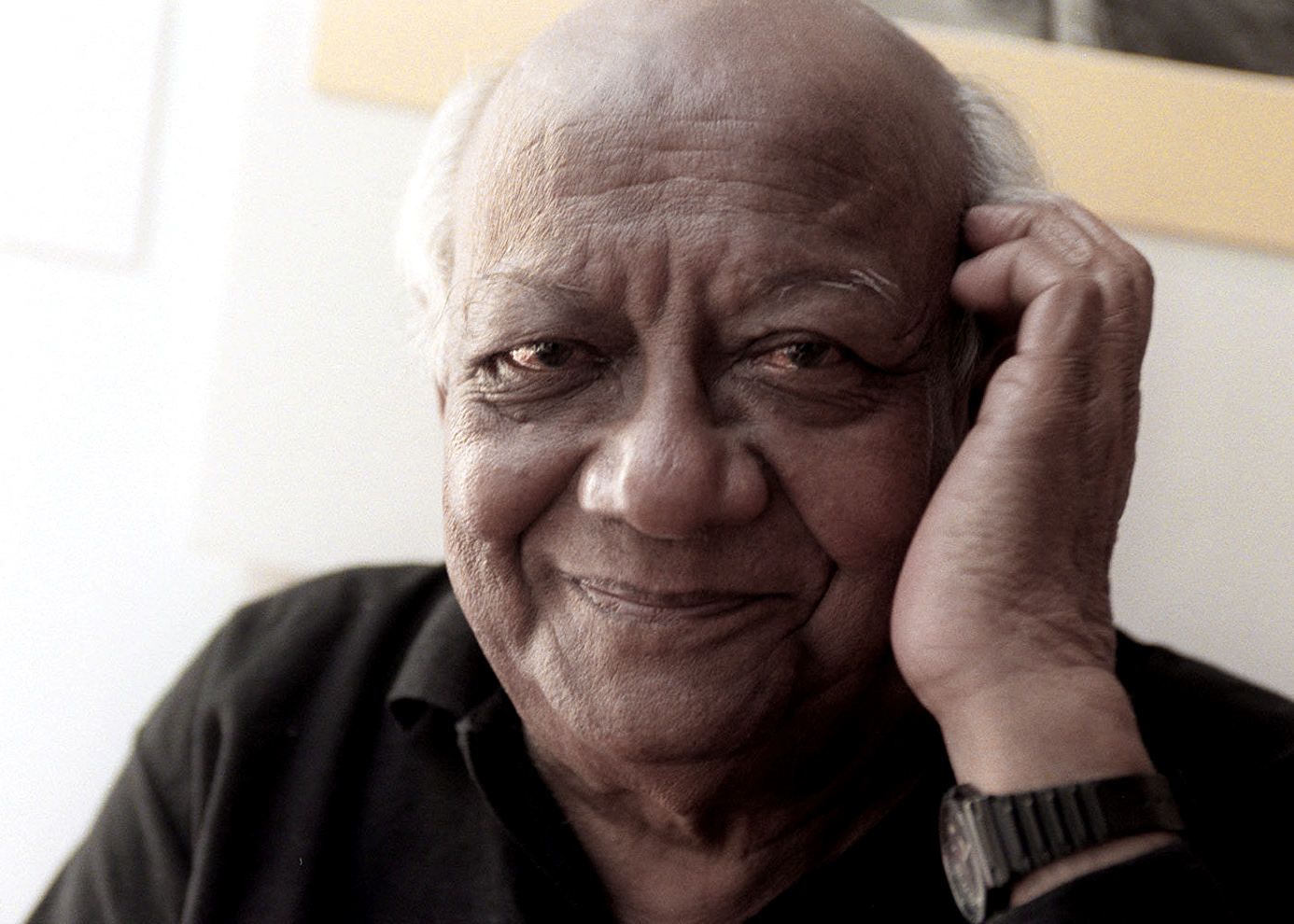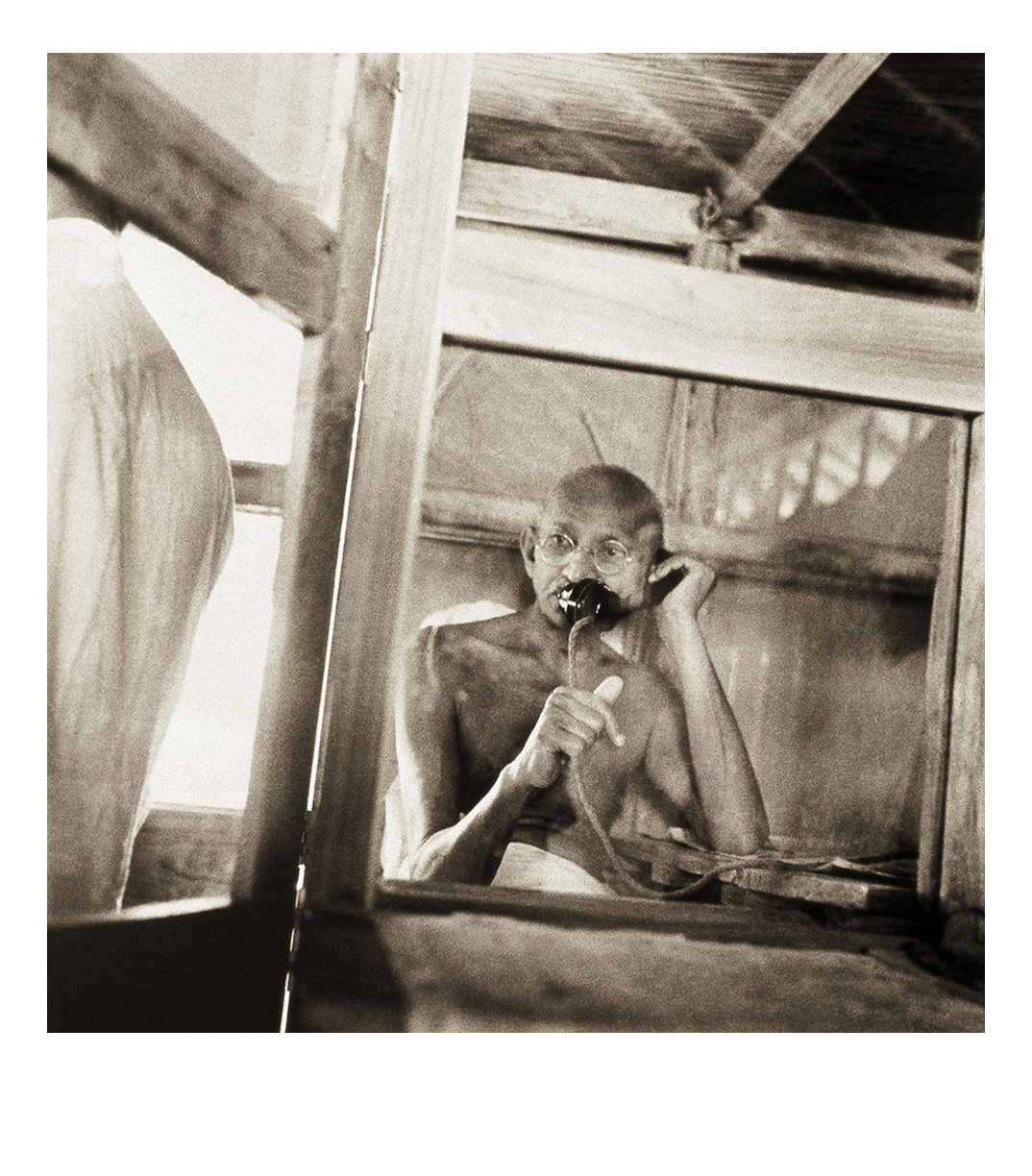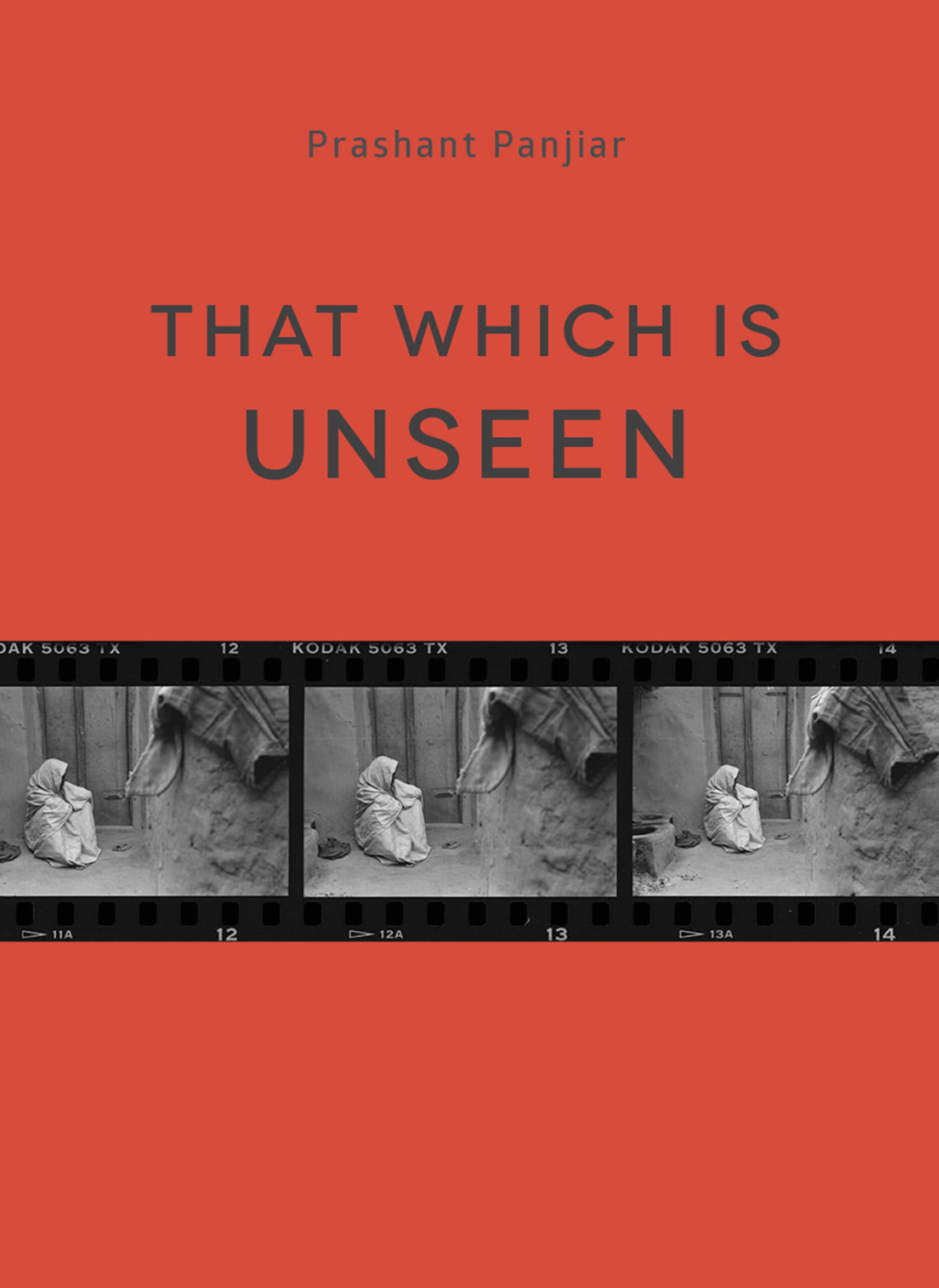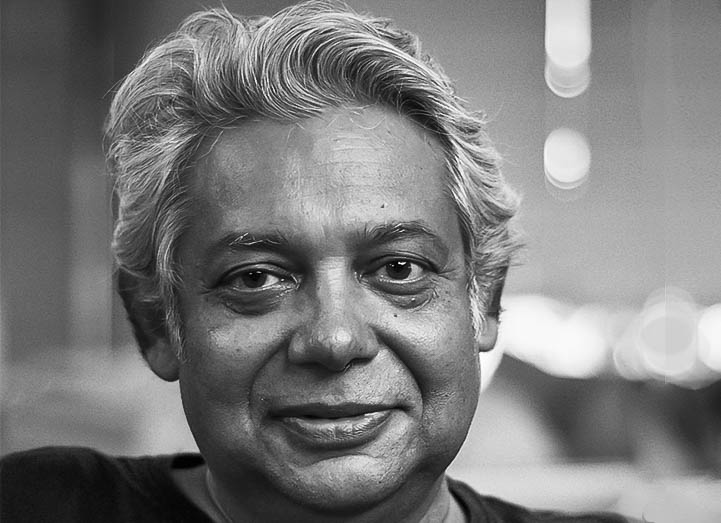
The Flag at 50 © Prashant Panjiar / Outlook
THAT WHICH IS UNSEEN
Acclaimed photo-journalist Prashant Panjiar’s Photo-book and Exhibition
Acclaimed photojournalist Prashant Panjiar’s latest photobook ‘That Which Is Unseen’ was launched on September 18. Published by Ahmedabad-based Navajivan Trust, this book is a collection of photographs and backstories from Panjiar’s almost four decades of photography career. Navajivan Trust, founded by Mahatma Gandhi, is a publishing house with a good reputation and has published more than 800 titles in English, Hindi, Gujarati and other languages.
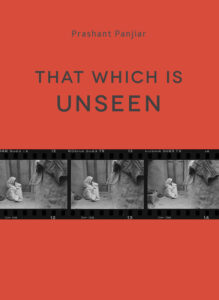 Every photograph has a story to tell. There is also a story behind every photograph, and often it never gets told. It is more so in the case of editorial photography – the story is often told by someone else and the photographs merely accompany the text. How much ever powerful a photograph is, it is the text that defines how a photograph is seen. Often the journey of the photographer, their ideology, experiences and intent get shrouded by other pressing demands placed by the agency that commissions and publishes the story. That way, what is seen has some missing elements, and most often we never get to hear what the photographer has to say.
Every photograph has a story to tell. There is also a story behind every photograph, and often it never gets told. It is more so in the case of editorial photography – the story is often told by someone else and the photographs merely accompany the text. How much ever powerful a photograph is, it is the text that defines how a photograph is seen. Often the journey of the photographer, their ideology, experiences and intent get shrouded by other pressing demands placed by the agency that commissions and publishes the story. That way, what is seen has some missing elements, and most often we never get to hear what the photographer has to say.
Prashant Panjiar’s ‘That which Is Unseen’, is a unique book as far as Indian photo-journalism is concerned. It has more than 100 photographs, most of which have already been published. Those following the Indian political context are indeed familiar with most of these images. But then, it contains detailed texts narrating the behind-the-scenes “unseen” stories that led to the making of the photographs. An experience, a feeling, an untold information, even tidbits about the weather, add a new layer of meaning and interpretation. Because there are no restrictions or outside pressure, there is more freedom for the photographer to express in his words. That way, That which is Unseen is a perfect conceptual match to the below quote by Frédéric Bastiat with which the book begins “… an act, a habit, an institution, a law, gives birth not only to an effect, but to a series of effects. Of these effects, the first only is immediate; it manifests itself simultaneously with its cause—it is seen. The others unfold in succession—they are not seen: it is well for us, if they are foreseen”.
Prashant’s oeuvre is largely editorial works, and because of that it has eventful historical and political relevance. Looking back, especially during these politically turbulent times, does open up a lot of dialogues. The book itself is chronologically presented, with significant events triggering memories of violence and pain. Importantly, the narration points to the underpinning thoughts and unsaid risks taken by the author in bringing out those exclusive shots that received international acclaim. In one instance, “Prime Minister Indira Gandhi’s assassination on 31 October 1984 and the anti-Sikh riots that followed was probably a turning point for photojournalists in general and for me personally. Before 1984, we photojournalists had to only watch out for the cops who were inclined to thrash us and smash our cameras, but now there were violent mobs that were an even greater threat. And it has been like that ever since,” recounts Panjiar. In the book, the author also shares his ethical concerns and dilemmas while photographing the agony-filled moments. While asked about these anecdotal references he said, “Our work involves a certain invasion of privacy, which, though unfortunate, is there. But one thing is, you have to recognise that the work is important… important enough to invade and do that work serving its larger meaning or reason. In the case of natural calamities, those stories and images have to be brought to the larger public. The world has to know about these things that are happening elsewhere. But, you have to be respectful and sensitive about people’s feelings while doing the work”.
Panjiar considers the work titled The Flag at Fifty as his signature image that would become his identity. It already has been the cover of Outlook’s 50 Years of Independence commemorative issue. It has also been extensively published, including on the cover of historian Ramchandra Guha’s book “Makers of Modern India”. Panjiar tells the story of when and how that image was made. It was rather a failed photo-op event – due to weather conditions the Guinness World record aspirant had to abandon the stunt of jumping from the Air Force parachute with the largest flag. While most others had left with the standard, posed photos, Panjiar was hanging around the tarmac and when he saw the wind whipped the flag up into the sky like a massive wave, he instinctively took a few shots.
The photobook release function was a simple gathering led by Vivek Desai at the Navajivan Trust where an exhibition of about 30 digital prints of Panjiar also opened to the public. In the coming days, there is a plan for a series of one-on-one discussions with the author, with the premiere talk launched at the Museo camera on 26th September 2021. MAP Bangalore in collaboration with BIC will be organising an online event this October.
THAT WHICH IS UNSEEN
Hard Cover | Size: 170 X 230 mm | Pages: 154 pages, including gatefolds
Images & Texts: Prashant Panjiar
Publisher: Navajivan Trust
Price: Rs 3000
For orders within India https://imjo.in/yaJVJu
For orders from outside India write to sales@navajivantrust.org
Read Interview with Prashant Panjiar here.
Published on October 1, 2021
Share
Related News
A new venue for art lovers: MAP, Bangalore is open for public
The newly opened Museum of Art & Photography (MAP) in Bengaluru welcomed its first visitors in Feb, offering a glimpse of around 60,000 works that would refresh the subcontinent's rich art history.
Plumbing the depths of space and time, James Webb Space Telescope
The James Webb Space Telescope has been designed to see the infrared part of the spectrum, making it capable of glimpsing “galaxies far far away”. This provides access to a part of the spectrum that no telescope has had till date, not even the iconic Hubble Telescope, which can see ultraviolet and visible light.
Snapshots from a forgotten land
Photojournalist Kanika Gupta takes a more personal approach on her page. The Indian journalist, who had to be evacuated from Afghanistan when the Taliban first took over, has since returned, and has resumed her efforts of documenting the country. On her Instagram handle, lifeoutside2by2, she fearlessly interviews and photographs Taliban soldiers, bringing out both the cruelty and humanity in their stories. A snapshot of a man who has been taught to believe that “making landmines is holier than fighting" is juxtaposed with one of two friends - one of whom used to be in the National Army and the other, a hardened Taliban, who joined when an American drone strike killed seven of his family members on a single day. Today, the two friends, who have both joined the regime, reminisce about having fought on different sides.
MAP’s Director’s Cut: Reimagining and Reinventing Museums
This episode (Wednesday, 9th March, 6:30 pm) of MAP’s series Director’s Cut features Nadine Wietlisbach, Director of Fotomuseum Winterthur in Switzerland.
The making of a nation, through Sunil Janah’s eyes
After Sunil Janah moved to the US in his later days, these prints were mostly forgotten. Rahman says it is by another coincidence that they landed in India as a collector managed to buy some of them. “The timing of the exhibition coincides with the 75th anniversary of Independence. At a time when the BJP is trying to demolish Nehru’s legacy and spreading the narrative of ‘Make In India’, Janah’s works assume significance as the ‘Make In India’ started in the 1950s. That is why it is so important that people see these pictures. We should not forget this history and the BJP is trying to make us forget it.” Apart from their historical significance, these are stunning images, says Rahman. “That was a time of great hope. Now, we have a different view about industries. We perceive industries as polluting, but at that time we needed all these factories because we needed indigenous manufacturing. Also, they provided jobs to lakhs of people, particularly in backward areas. There was a great positive energy which actually can be felt in Janah’s photographs.”
Celebrating Resistance, 152 years of Mahatma Gandhi
On Gandhi's 152nd anniversary, PhotoMail remembers him through these everlasting imageries. There are hundreds of photographs of Gandhi, often the author is unknown. Here is a collection of photographs by known Indian and International photographers.
THAT WHICH IS UNSEEN Acclaimed photo-journalist Prashant Panjiar’s Photo-book and Exhibition
Acclaimed photojournalist Prashant Panjiar's latest photobook 'That Which Is Unseen' was launched on September 18. Published by Ahmedabad-based Navajivan Trust, this book is a collection of photographs and backstories from Panjiar's almost four decades of photography career. Navajivan Trust, founded by Mahatma Gandhi, is a publishing house with a good reputation and has published more than 800 titles in English, Hindi, Gujarati and other languages.
Analog on the go: Ilford Photo Pop-up Darkroom
Ilford has announced portable pop-up photo darkroom tents as the go-getter strategy for attracting photographers to opt Analog photography. The portable pop-up tents and a starter kit with chemicals & materials are expected to be available this November.
Looking or shooting? A pe(e)p toy by Ray-ban and Facebook to click as you see
Ray-ban Stories sunglasses are built in partnership with Facebook and Ray-Ban’s parent company EssilorLuxottica and are the first product to be produced as a result of a multi-year partnership between the two companies. Ray-Ban Stories will be available in 20 different combinations in classic Ray-Ban styles — Wayfarer, Wayfarer Large, Round, and Meteor — and five colors with a range of lenses including clear, sun, transition, and prescription. Ray-Ban Stories features dual integrated 5-megapixel cameras that are designed to let the wearer capture everyday moments as they happen from a first-person perspective. The dual 5MP camera gives new depth and dimension to the content. It takes high-resolution photos (2592×1944 pixels) and quality video (1184×1184 pixels at 30 frames per second). Camera automatically adjusts to the light around for high-quality captures. One can also attend to calls, listen to music via blue tooth while on the go.
Prashant Panjiar’s photobook ‘That Which Is Unseen’ to be published soon
Indian photo-journalist Prashant Panjiar’s photo book That Which is Unseen published by Navjivan Trust will be released on 18 September 2021. The book is a compilation of backstories of Panjiar’s three decades as a photojournalist, told through images and words.


